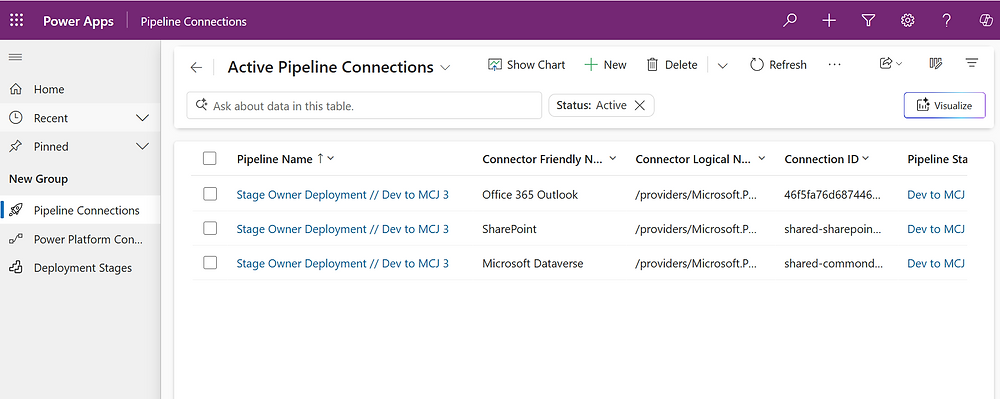Now Reading: What is this “I.P.” that Microsoft says you need today?
-
01
What is this “I.P.” that Microsoft says you need today?
What is this “I.P.” that Microsoft says you need today?

As a Microsoft Partner, who is not living under a rock, you have no doubt heard the Microsoft drumbeat around “Recurring I.P.. To listen to Microsoft, if you don’t have this, you may not be around very long, or at the very least, your business won’t be worth very much.
I find many partners today are struggling with the I.P. concept, not just how to engage, but more often, what “I.P.” even is. As a partner who has pivoted to a business model around I.P., I thought I would share what we have learned over a few posts.
So what does Microsoft mean by I.P.?
I.P. is an abbreviation for Intellectual Property. In our context, it is something that you or your organization “Knows” or “Does” that is unique. I.P. can take many forms, but often partners’ first thought is an App of some kind. While an App is indeed a manifestation of I.P., it is far from the only type of I.P.. But, let’s shake out this App angle some more. Most of us use some kind of Apps today. Some feature that you found in the App store on your smartphone that you thought was pretty cool, maybe even cool enough that you paid for it. Microsoft has several “App Stores”. In addition to the Windows Phone Store, there is also the Office Store as well as “Marketplaces’ for Dynamics and Azure, etc. The goals of the App stores for Microsoft is to make their core products stickier with added, specific functionality that is not broad enough for them to develop. Microsoft would like third-parties like you, to plug these holes. But really, unless you are an application developer, this is probably not an “I.P.” opportunity for you. But again, that is only one form of I.P., let’s look at some other approaches that may be more realistic for you, starting with what you know.
So what do you Know?
When thinking about Partner I.P. you need to explore two areas: what do you know, and what do you do. First, what do you know, and how can you mash that up. For example, as a Microsoft Partner you know about Microsoft products that you support, but so do a lot of other partners. But maybe, in a past life you were an Air Conditioning Contractor. If you combine what you know about Microsoft products, with what you know about the Air Conditioning business, you may have the foundation for some unique I.P.. Putting your Air Conditioning Contractor hat back on and looking at the Microsoft Products that you offer today, do you see some things that make sense to you from that viewpoint? A specific set of features, or configuration that would be of particular value to you? Great, this is one way to develop what we call “Vertical Expertise”. You have an understanding of a particular industry, mashed up with Microsoft Products, that not many other partners will be able to speak to. Before “Recurring I.P.” was the hot topic, “Vertical Specialization” was the suggested direction, and still is. In fact, Vertical knowledge is the bedrock of quite a bit of recurring I.P. Maybe you were not an Air Conditioning Contractor in a past life, but you handed out some cards at an Air Conditioning tradeshow and found yourself with several Air Conditioning customers. In the course of working through several similar customers you start to notice some common requests. By the time you get to the last one, you already know what they need. This is Vertical Expertise you have acquired by proxy.
So what do you do?
As a Microsoft Partner, you go into work every day and do… what? Sure, you may migrate some email to Office 365, maybe you setup some transport rules in Exchange, maybe you fix some customer network issues, etc. Over the years, you may have created some personal shortcuts, an easier way to do something that not a lot of other partners have figured out. Kind of like a recipe, you may not have created any ingredients, but you have applied very specific ingredients in just the right proportions, to create something very unique from a bunch of commonly available components. Your personal deployment “recipe” is also .I.P.. This may be a “Horizontal” I.P., meaning that many different types of customers would benefit, not just Air Conditioning Contractors. There are many examples of I.P. built around “Methodologies”. Often, over time, code is developed to assist with your “Methodology” to further enhance and differentiate it. Make no mistake, a Service can be packaged up and offered just like an App can.
A Solution in Search of a Problem.
How many times have you downloaded an App, only to determine that it was pointless and removed it minutes later? The App may have looked really cool, and taken a lot of work to develop, but at the end of the day, it was not solving a problem (This is probably true for half of the Apps out there). In order to make any money, your I.P. is has to solve a problem. Vertical or Horizontal, does not matter. What does matter is that the potential purchasers of your I.P. have to recognize the problem; the more obvious and acute, the better. Often today, some education is required to make a purchaser aware of the problem, but if you have to spend an hour on the phone trying to convince a prospect that a problem exists, you are going to have a tough road. The landscape is littered with solutions to obscure problems. For example, an App that alerts you in the event of a Zombie Apocalypse, may not get much traction… on second thought, today that might actually sell, but you get my point (mental note, explore ZombAlert App). Many of us were trained in the Solution Selling process and one of the tenets is to find the Pain. Not the ache, but the Pain that requires action. Your I.P. should solve for a Pain.
In my next post I will explore some types of I.P., that partners not unlike you, have come up with. Eventually I will get to some advanced topics for those of you that are already down the path with I.P. on what to do with it.
[info type=”info”]Non-Confidential Information Notice. This post was written by Steve Mordue who is a member of multiple Partner Advisory Councils and is therefore subject to an Enhanced Microsoft Non-Disclosure Agreement regarding information conveyed to PAC Members. All opinions expressed are solely those of Steve Mordue, and no information provided herein is subject to the NDA. Basically, Steve knows a lot more than he let’s on; He’d tell ya, but then he’d have to kill ya.[/info]
The post What is this “I.P.” that Microsoft says you need today? first appeared on Steve Mordue MVP.















